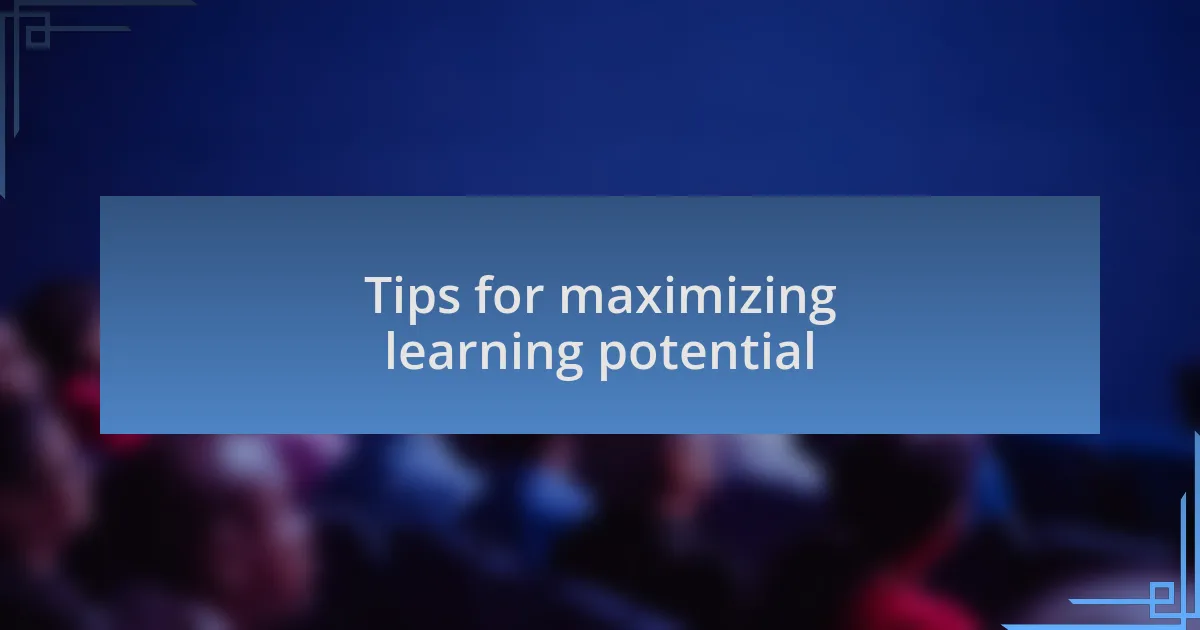Key takeaways:
- Dyslexia impacts reading, writing, and comprehension, often causing emotional challenges and anxiety.
- Using tools like text-to-speech software and mind-mapping applications can significantly enhance learning and organization.
- Technology, such as speech-to-text apps and digital planners, can improve writing and time management, helping to reduce anxiety and increase productivity.
- Tailoring learning tools to personal styles and creating a distraction-free environment are essential for maximizing learning potential.

Understanding dyslexia and its challenges
Dyslexia is more than just difficulty reading; it’s a specific learning disorder that can make tasks like writing and understanding language particularly daunting. I remember the frustration of trying to grasp a new concept, only to feel the words jumble in my mind, leaving me questioning my intelligence. Have you ever felt that sense of defeat just when you’re trying to process something important?
One of the toughest challenges people with dyslexia face is the emotional toll it can take. I can recall countless moments of anxiety during tests, worrying that my shortcomings would overshadow my strengths. It’s about more than just reading—it’s navigating a world where every written word can feel like an obstacle.
Understanding dyslexia also means recognizing that traditional learning methods may not work for everyone. I often found myself craving alternative approaches, wondering why simpler explanations seemed elusive in classrooms. This desire for adaptability is crucial, as it opens the door to discovering tools that can truly make a difference in one’s learning journey.

My experience with specific tools
There was a time when I stumbled across text-to-speech software, and it felt like discovering a hidden ally. I remember using this tool on particularly dense reading assignments. Suddenly, I could listen to the words being read aloud, which transformed my comprehension. Have you ever experienced that moment when a tool just clicks for you? For me, it was like flipping a switch; the words began to flow instead of tangle.
Another significant tool in my journey has been mind-mapping applications. I used to dread organizing my thoughts for essays, feeling overwhelmed by the sheer volume of ideas swirling in my head. However, once I started visually mapping out concepts, things changed. I vividly recall the satisfaction I felt when I could see connections clearly laid out before me. This visual framework allowed my thoughts to escape the confines of confusion.
I also explored spelling and grammar checkers that greatly eased my writing process. In school, I often felt self-conscious about my spelling, worrying that my message would get lost in mistakes. These tools provided me with gentle corrections without judgment, almost like an encouraging friend by my side. It made me wonder how many people could benefit from such simple yet powerful support in their educational journey.

Overcoming obstacles with technology
I recall a moment when I stumbled upon a speech-to-text app that completely altered the way I approached writing assignments. I remember sitting at my desk, frustrated, struggling to put pen to paper. But once I started speaking my thoughts aloud, it felt liberating. Have you ever tried articulating your ideas verbally instead of writing them down? It opened up a whole new avenue for expressing myself, helping me overcome the barrier that often felt insurmountable.
Another hurdle I faced was time management, especially when juggling multiple assignments. I began using digital planners and reminders, which helped organize my workload visually. One day, as I checked off completed tasks, I experienced an exhilarating sense of control. How gratifying is it to see progress in such a tangible way? Those tools empowered me to stay on track and transformed my anxiety into achievement.
When I discovered interactive learning platforms, it was a game-changer for me. I used to feel isolated, but finding engaging online communities made a significant difference. I vividly remember participating in a discussion board, sharing my struggles with others who understood my experiences. It felt like finally finding my tribe. Have you ever felt that sense of belonging simply because the right tools connected you with the right people? That connection fueled my journey, reminding me that technology can bridge gaps and foster support in ways I never anticipated.

Tips for maximizing learning potential
When I first integrated visual aids into my study routine, I was amazed at how they changed the way I absorbed information. Using tools like colorful mind maps and graphic organizers allowed me to visualize complex ideas, making them much easier to grasp. Have you ever noticed how a simple image can spark an entire memory? For me, these visuals not only enhanced my understanding but also made learning enjoyable.
One crucial aspect of maximizing learning potential is tailoring the technology to your learning style. For instance, I found that auditory learners, like myself, benefit immensely from podcasts and audiobooks. Listening to concepts being explained in a conversational manner helped reinforce my understanding. Do you ever find that you grasp information better when it’s presented in a way that aligns with your learning style? It really makes a difference in retaining what you learn.
I also learned the importance of establishing a distraction-free environment while using digital tools. Initially, I would get easily sidetracked by notifications and social media alerts. However, once I turned off notifications and set boundaries for my study time, my focus improved significantly. Isn’t it amazing how a little boundary-setting can lead to profound changes in productivity? Embracing this discipline allowed me to dive deeper into my learning, maximizing every moment spent with technology.